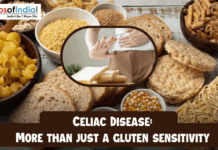The International day against drug abuse and Illicit trafficking emphasises mainly on eradicating drug abuse and strengthening action towards raising awareness among youth. It is celebrated every year on June 26, as decided by the General Assembly on December 7, 1987.
What is drug abuse?
It is a substance that creates a psychiatric, social and psychological problem to provide pleasurable effects on the brain. It affects not only youth but a wide section of people of different ages. It annihilates the people and society socially, physically, culturally, economically and emotionally.
It develops a situation of fear, anxiety and a sense of insecurity in the people. It also disturbs the nervous system, which makes it cumbersome for them to provide a proper response. Its addiction can cause severe loss of appetite and weight, constipation, escalation of anxiety and irritability, sleeplessness and slower impairment of intellectual functioning. Its causes include chemicals that may be used as part of religious practices or rituals or for recreational activities, implying creative inspiration.
What is Illicit Drug Trafficking?
Trafficking of drugs is a worldwide illegal trade that contains the production, cultivation, propagation and sale of banned substances as per the laws. The United Nations Office on Drugs and Crime (UNODC) tackles the illegal international drug markets. The Northern trade routes and Balkan areas are the critical drug trafficking areas that connect Afghanistan to the enormous demand of other global drug markets in Eastern and Western Continents.
Timeline of themes
2021: This year’s theme is “Share Facts On Drugs, Save Lives”, which will combat misinformation and encourage sharing the facts on drugs — from health risks and solutions to resolve the world drug problem to evidence-based prevention, treatment and care.
2020: The Theme named ”Better Knowledge for Better Care” aimed to revamp the knowledge, understanding about the drug problem across the globe and how better knowledge will assist in enabling international cooperation to counteract the impact on health, governance and security.
2019: ”Health for Justice. Justice for Health” was the theme focusing on the philosophy that justice and health are “two sides of the same coin”. The United Nations stated that to tackle the drugs associated problems, accountable institutions of criminal justice, health, and social services should come together in effect to offer integrated solutions.
Drug abuse consists of cannabis, cocaine, hallucinogens, opiates, prescription medications, including painkillers and sleeping pills. The United Nation states that, in 2018, nearly 269 million people undertook drugs globally, which is 30% over in 2009. More than 35 million people endure drug use disorders.
United Nations Office on Drugs and Crime (UNODC) has been persistently working on making the countries safer from drugs, corruption, organised crime and terrorism for two decades. Its International Narcotics Control Board (INCB) said, “In 2017, authorities in India dismantled two illicit Internet pharmacies, seizing close to 130,000 tablets containing psychotropic substances. Fifteen people were arrested in the process.”
Deputy Director-General, Narcotics Control Bureau, Rajesh Nandan Srivastava, added, “Up to 9600 kg of Acetic Anhydride, a precursor to heroin, was seized from Delhi alone, and a trail led up to business-to-business (B2B) companies which were trading in such precursors online.”
States submit data and reports on drug trafficking trends comprising arrest, seizures, price and purity of illicit drugs through the Annual Reports Questionnaires (ARQ), which the UNODC analyses for an action.




